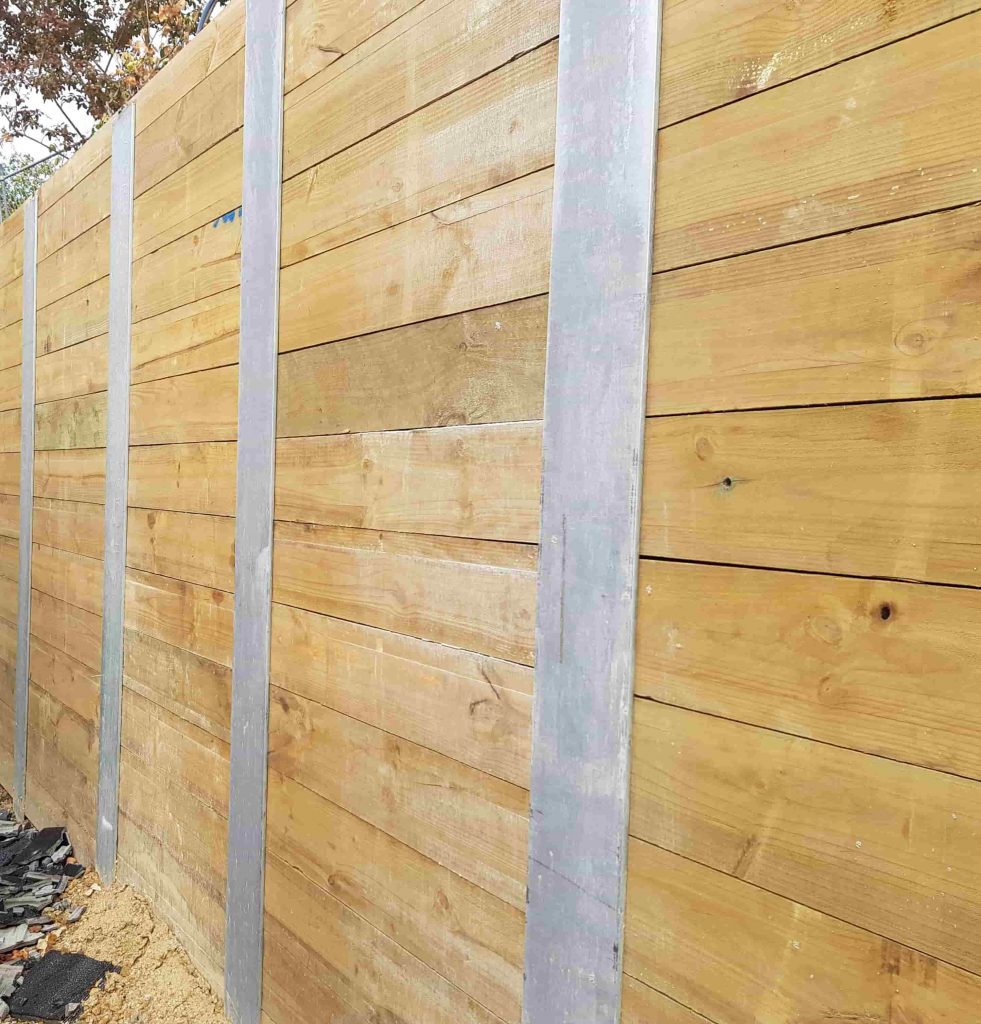Introduction
Building a maintaining wall isn't practically stacking stones or pouring concrete; it's a complex process steeped in science and engineering. Maintaining walls are critical structures that keep back soil, preventing disintegration and permitting the creation of usable arrive on slopes. Whether you're aiming to set up a garden function, create more space for landscaping, or prevent soil motion in locations prone to shifts, understanding the intricacies behind strong and resilient retaining walls is essential. This short article will explore various elements of maintaining walls, using insights from professional professionals who concentrate on this field.
The Science Behind Strong and Durable Retaining Walls by Expert Contractors
When we talk about the science behind keeping walls, we're diving deep into products, style concepts, and structural stability. Maintaining walls can be made from different products such as concrete sleepers, wood sleepers, stone, and even H beams. Each product provides distinct benefits and obstacles that need to be comprehended for optimum performance.
Understanding Soil Mechanics
Soil mechanics is the foundation of any keeping wall building. The wall needs to withstand the lateral pressure put in by the soil it holds back. This pressure varies based upon several factors:
- Soil type: Clay, sand, silt-- all these types behave differently under stress. Moisture content: Water increases soil weight and can trigger instability. Height of the wall: Taller walls need more robust assistance mechanisms.
The Role of Drainage in Retaining Walls
One crucial aspect often ignored is drain. Water accumulation behind a wall can result in increased pressure that may compromise its integrity.
Weep holes: These permit water to escape. Drainage pipes: Installed at the base to channel water away. Gravel backfill: Promotes drainage while offering stability.Types of Keeping Walls
Understanding different types of retaining walls is essential for selecting the best one for your project.
Gravity Walls
Gravity walls count on their own weight to withstand soil pressure. They are usually made from heavy products like stone or concrete.

Pros & Cons
- Pros: Easy style; no special structure needed. Cons: Limited height; requires substantial space at the base.
Cantilevered Walls
These walls utilize utilize to hold back soil, featuring a horizontal slab that extends into the retained soil.
Pros & Cons
- Pros: More efficient than gravity walls for taller heights; less product needed. Cons: Needs mindful engineering and design calculations.
Sheet Stack Walls
Often utilized in soft soils where other types may stop working, sheet stack walls include interlocking slabs driven into the ground.
Pros & Cons
- Pros: Reliable in tight spaces; minimal footprint. Cons: Less stable under high loads; can be expensive.
Choosing Materials for Maintaining Walls
The option of materials significantly impacts a wall's sturdiness and effectiveness.
Concrete Sleepers vs Lumber Sleepers
Concrete sleepers are preferred for their strength and longevity compared to timber sleepers which are more visually pleasing but might have a much shorter life-span due to rot or insect damage.
Comparison Table
|Material|Sturdiness|Expense|Visual Appeal|Upkeep|| -------------------|------------|----------|-------------------|--------------|| Concrete Sleepers|High|Medium|Low|Low|| Lumber Sleepers|Medium|Low|High|High|
Stone as a Material Choice
Stone is another classic choice known for its sturdiness but includes higher costs related to labor-intensive installation processes.
Design Factors to consider by Expert Contractors
Expert professionals know that design plays a critical function in ensuring that maintaining walls function successfully with time.
Height Restrictions
Local building regulations often impose constraints on how high a maintaining wall can be constructed without needing extra engineering certification.
Bending Minutes and Shear Forces
Contractors determine flexing minutes (the propensity of a challenge flex) and shear forces (the force acting parallel to an object) when developing maintaining walls.
Installation Process Overview
The installation procedure needs meticulous preparation and execution:
Site assessment Design finalization Material selection Excavation Foundation preparation Wall assemblyCommon Setup Mistakes
It's simple to make mistakes during setup-- here are some typical ones:
- Not accounting for drainage Skipping proper compaction of backfill Insufficient reinforcement
FAQ Section
What Are Retaining Wall Installers?
Retaining wall installers are specialized specialists who focus entirely on building these structures with competence in numerous materials like concrete sleepers or lumber sleepers.
How Long Do Maintaining Walls Last?
With appropriate installation and upkeep, many keeping walls can last anywhere from 20 to 100 years depending on materials used.
Can I Build My Own Maintaining Wall?
While do it yourself projects can be rewarding, it's a good idea http://erickizlk627.trexgame.net/the-complete-checklist-for-picking-a-retaining-wall-specialist-in-melbourne to speak with a professional specialist if you're unskilled with structural work; incorrect installation can lead to expensive failures down the line.
What Is Backfill?
Backfill refers to the product used to fill out behind a keeping wall after construction; it generally consists of gravel or crushed stone for optimum drainage.
How Much Does It Expense To Construct A Retaining Wall?
Costs vary commonly based upon size, product choice (like concrete versus wood sleeper), labor rates, and area but usually variety from $15-$50 per square foot installed.
Are There Allows Required For Structure A Keeping Wall?
Yes! Many municipalities need permits before constructing any substantial structure like a maintaining wall due to security policies-- always inspect local laws first!
Conclusion
Building strong and durable keeping walls involves much more than merely stacking materials together-- it's a detailed blend of science, engineering principles, product choice, style considerations, environmental aspects like moisture levels or soil types being taken into account every step along the method! Whether you choose concrete sleepers due to their toughness or go with rustic appeal with wood sleepers-- collaborate with skilled specialists guarantees success through comprehensive planning combined with industry knowledge customized particularly towards your needs! The science behind strong and long lasting maintaining walls by expert professionals will not just safeguard your property but likewise improve its aesthetic appeal while standing tall against time itself!